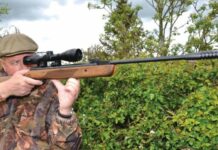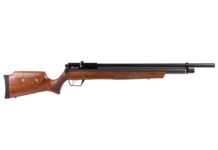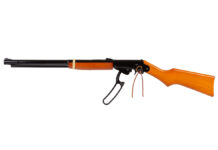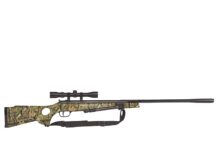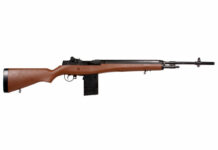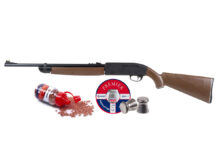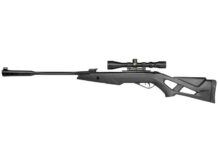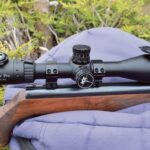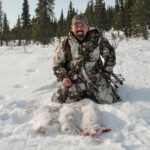Have you ever seen those unique-looking points extending from the red deer’s antlers? Those elegant and sharp curves are referred to as a brow tine.
But what exactly is a brow tine, and what purpose does it serve?
In this article, we will discuss all there is to know about the brow tine deer. Now, without further ado, let’s get started.
Table of Contents
What is a Brow Tine on a Deer?
The brow tine is the first point where the antler branches off from the main beam. It is located near the base of the antlers, just above the deer’s eyes. The brow tine is an essential feature for hunters who are looking to identify and target a specific deer.

It serves as an indicator of a buck’s maturity and overall health.
Antlers are one of the most distinctive features of male deer, and they play a crucial role in many aspects of their lives, from mating rituals to self-defense. Antlers are made of bone, and they are shed and regrown every year.
Deer Antler Terminology – A Quick Overview
Deer antlers are a fascinating and complex feature of male deer. They play an important role in many aspects of the deer’s life, from mating to self-defense. Antlers are made of bone and are shed and regrown every year.
They grow in a branching pattern, with each branch having a specific name and location. Here’s a quick overview of some of the most common antler terminology:
What Age Do Deers Get Brow Tines?
Brow tines typically emerge when a male deer reaches maturity. Brow tines can also appear in some deers as early as four or five months old.
However, there is a considerable variation in the deer population. The difference in growth patterns can be due to genetic factors. But it can also be due to nutrition and environmental conditions.
Here’s a brief data interpretation on brow tines in deers.
Brow Tines in Mature Bucks:
Brow Tines in mature bucks are an interesting aspect of deer anatomy. Brow tines represent the maturity and age of the animal.

As bucks mature, their brow tines tend to grow larger. Hence, making it easy to differentiate from those of their younger counterparts.
Larger & Defined Brow Tines:
As a deer matures and thrives in its environment, its brow tines tend to become more distinct and sizeable.

Hunters can use this information to make informed decisions about which deer to target, based on factors such as the size and age of the animal.
Why Some Deer Grow Brow Tines and Others Don’t
Not all bucks will grow brow tines, and some bucks may have smaller or less defined tines. The size and shape of the tine can also vary between species of deer.
For example, mule deer tend to have more prominent brow tines than white-tailed deer.
Despite these variations, the brow tine remains a valuable feature for hunters and wildlife enthusiasts alike. It serves as a visual indicator of a deer’s age and health, and it adds to the overall beauty and majesty of these magnificent animals.
Scoring Deer: Do You Count the Brow Tines on a Deer?
Deer hunting is a popular activity for many hunters, and for some, scoring the deer they take down is an important part of the experience. Scoring a deer involves measuring and adding up the length of each tine on the deer’s antlers, along with the length and width of the main beam.
While there are several different methods for scoring deer, one question that often arises is whether or not to count the brow tines when tallying up the total score.
In general, the more tines a deer has, the higher its score will be. However, not all tines are created equal, and some may be longer or wider than others, which can also affect the overall score.
When scoring a deer, it’s important to follow the guidelines set forth by the organization or competition in which you are participating.
Conclusion:
The brow tine is an important feature of deer antlers, as it serves as a visual indicator of the animal’s age and health. It can vary between species, with mule deer generally having more prominent brow tines than white-tailed deer.
Understanding the different features of deer antlers can help us better appreciate these magnificent animals and gain a deeper appreciation for wild creatures in general.
Do all Bucks have brow tines?
No, not all bucks have brow tines. While most bucks do have brow tines on their antlers, there is a small percentage of bucks that are genetically programmed to not produce brow tines.
However, it’s important to note that this trait is not necessarily passed along to their offspring, as antler potential is also influenced by the genetic contribution of the does.
Do whitetail deer have brow tines?
Yes, whitetail deer do have brow tines on their antlers. In fact, a single brow tine, also known as an “eye guard,” is commonly present on each antler, although it is not always guaranteed.
In addition to the brow tine, a typical mature rack for a whitetail deer will have two to four other tines per antler, along with the beam tip, resulting in a total of 4 to 6 points on each side.
Will a deer without brow tines ever grow them?
It is unlikely that a deer without brow tines will ever grow them, particularly if it is genetically programmed to not produce them. In the case of whitetail bucks, research has shown that if a buck has spiked as his first set of antlers, he has a 90 percent chance of developing into a buck with missing brow tines later in life.
How do you measure brow tines on a deer?
To measure brow tines on a deer, start by identifying the G-1 tine, also known as the brow tine, on each antler. Measure the length of the brow tine from the front to the tip of the tine.
If the tine splits into multiple branches, measure the length of the dominant branch. The other end of the split is considered an abnormal point and should be counted as a separate point.
Regardless of the number of points on the antlers, it is important to take four circumference measurements per side.
Do brow tines count?
Whether brow tines count towards the total point score of a deer depends on the specific scoring system being used.
In some scoring systems, such as the Boone and Crockett Club scoring system for mule deer, the brow tine or eye guard is not counted when determining the total number of points on the antlers.
This is because traditionally, mule deer have been counted using one side only, and a typical mule deer has four points on one side with brow tines. However, in other scoring systems, such as for whitetail deer, all the points on the antlers are typically counted, including the brow tines.
What makes a drop tine on a deer?
A drop tine on a deer is a tine on the antlers that grows downward instead of upward or outward. In most cases, drop tines are caused by genetic coding, meaning they are a natural variation in the buck’s genes.
While prior injuries can cause a buck to grow weird antlers, true drop tines are mostly the result of a whitetail buck’s genetics.
However, it’s important to note that not all deer will necessarily develop a drop tine, even if they have the genetic potential to do so. Other factors, such as age, nutrition, and overall health, can also influence antler growth and the development of drop tines.
What are G tines on a buck?
G tines are a way of referring to the tines or points on a buck’s antlers. Specifically, the brow tines are commonly referred to as G1 tines, and the next tine on the antler is referred to as the G2, followed by the G3, and so on.
The length of the G2 and G3 tines on a whitetail deer are often the most significant in terms of scoring, although this can vary depending on the specific antler configuration. When scoring a buck’s antlers, each tine or point is measured and added to the total score.




